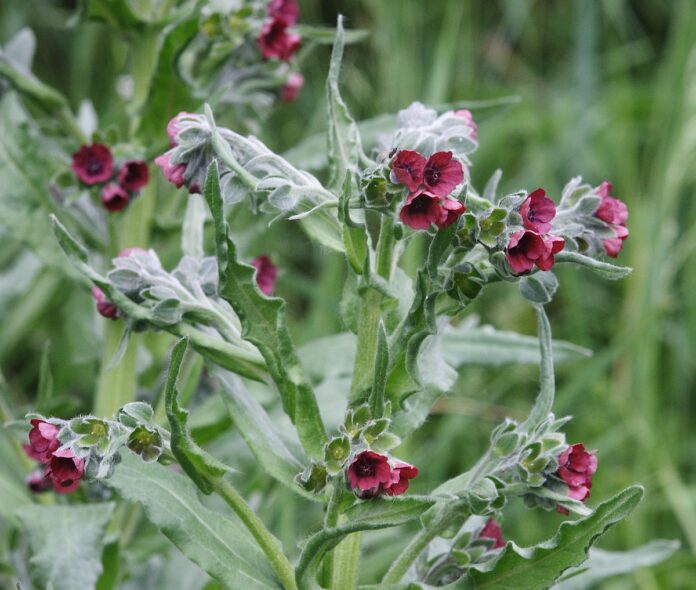
BY BLAINE BUG CREW
This year we were confronted with a bigger population of Houndstongue. We have to move quickly because these red-headed weeds spread quickly. They disturb our pastures and our animals. This weed needs to be monitored and to be controlled. Houndstongue has an extensive impact on our land. Houndstongue was the inspiration for Velcro, which is why it is so hard to control because it attaches itself to any animal or person.
Houndstongue is a biennial, or short-lived perennial, that reproduces by barbed seeds that readily adhere to fur, hair, and wool. In the first year, the plant develops a rosette with hairy, linear leaves ranging from 10-30 cm. Plants typically grow from 35-140 cm tall in the second year. The reddish-purple, five-lobed flowers bloom June through August. Each plant produces an average of 500 seeds composed of four prickly nutlets, each approximately 1 cm in length.
Houndstongue’s ability to spread has created serious problems on rangeland and pastures where the plant quickly colonizes disturbed sites and heavily grazed areas in riparian zones. Houndstongue contains pyrrolizidine alkaloids, making it poisonous to livestock and horses.
Currently, the insects we used to treat houndstongue are in short supply and are highly sought after. As this biological control agent becomes more readily available, we will release them in Blaine County. Even when faced with the difficulties of controlling this noxious weed, we continue to work against its infestation. With everyone’s help, we can quickly identify areas affected by this plant. If you see an infestation or have any questions, call Kay Draper at (208) 727-7221.


